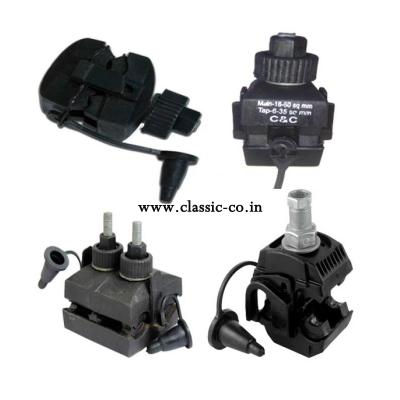
The insulation piercing connectors are made up for the service connections. The blades of these are made up of the tin-plated copper or aluminum alloy that allows connections to the aluminum or copper conductors. The body of the connectors is made up of the fiber glass that allows high resistance to its environment. Also, the connectors that are provided by the Classic & Co. are known for the superior mechanical properties. The single nut draws out two parts of the connectors together and shears off the two parts that have pierced the insulation. The installation process of these connectors is combined together with the mechanical, electrical and environmental features so as to provide the connectors ability of terminating the aluminum or copper stranded conductors.
The key features of the insulation piercing connectors offered by the Classic & Co. are:
- Range Taking
- Copper conductor
- Waterproof
- Captive and flexible end caps
- All components are solid and tight
- Equipped with shear head so as to ensure a reliable tightening torque
- Operating temperature is from -55°C to +55°C
- Installation temperature is from -20°C to +55°C
- Can be installed on energized main if not under load
All the insulation piercing connectors that are designed and manufactured at the Classic & Co. are being tested so as to fit the majority of the cables, regardless of the fact that if the cables are insulated with XLPE, PE or PVC. All the products are tested in accordance to the national specifications such as NFC, VDE, BS, and ESI.
These checks are done so as to verify the reliable operation even in the harsh of the environments and that includes:
- The insulation piercing connectors are designed for the installation from –20 °C up to +50 °C
- The operation experience with this insulation piercing connector temperatures range from the –60 °C up to +60 °C
- There’s no limitation of mechanical loads for main and branch conductors
- The shear head forces are adapted to the needed contact forces for each application that is the main, service, and lightning
- The voltage that can withstand to 6 kV in a 30 cm
- There will be no change in contact resistance and temperature after overloads or if there’s load cycling
- The voltage that can withstand ranges to 6 kV after heavy weathering exposure
- Corrosion resistance of metal parts

